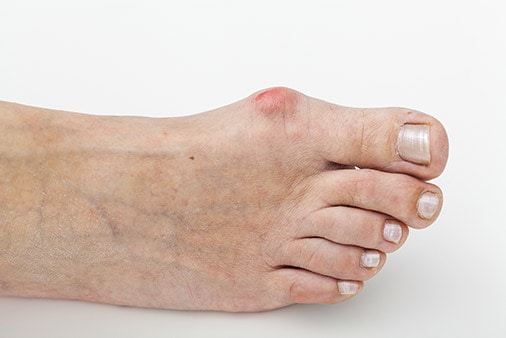Bunions

A bunion, also known as Hallux Valgus Deformity affects the great toe joint at the base of the toe. This condition results from improper biomechanics. As this occurs, the great toe will move away from the midline and the 1st metatarsal moves towards the midline, creating a “bump” on the side of the foot. This is actually a partial dislocation of the toe which will result in abnormal wear of the joint cartilage.
With time this condition will progressively worsen, causing pain and discomfort both with and without shoe wear.
How do bunions occur?
Heredity is the most common cause of hallux valgus. It is more common in women than men and abnormal biomechanics often play a role. Non-supportive shoe wear can also contribute to the development of bunions.
Treatment of Bunions
Bunions will continually progress and worsen with time. The abnormal biomechanics will affect the bunion area and eventually affect other parts of the foot. Our Podiatric Physicians will evaluate the medical history, perform a thorough physical and biomechanical exam and perform x-rays. Once this is completed, a proper diagnosis and treatment plan can be formulated.
Conservative management of bunions can range from orthotic shoe insoles, both over the counter or custom, anti-inflammatory medications, or steroids. Proper shoe wear and other corrective devices are also options. If conservative measures do not alleviate the pain or if there is too much damage to the joint, surgical management may be required. There are many different surgical procedures for bunions and depended upon the underlying condition that is causing the bunions.
